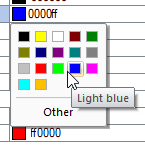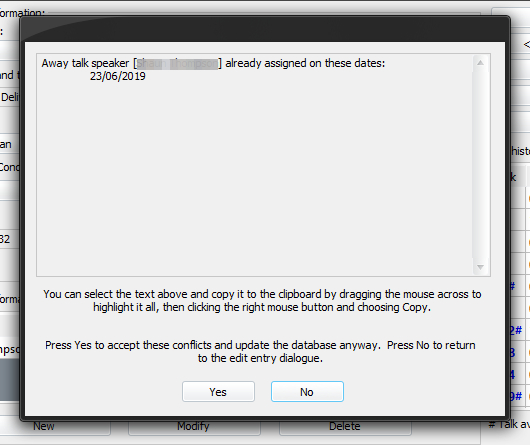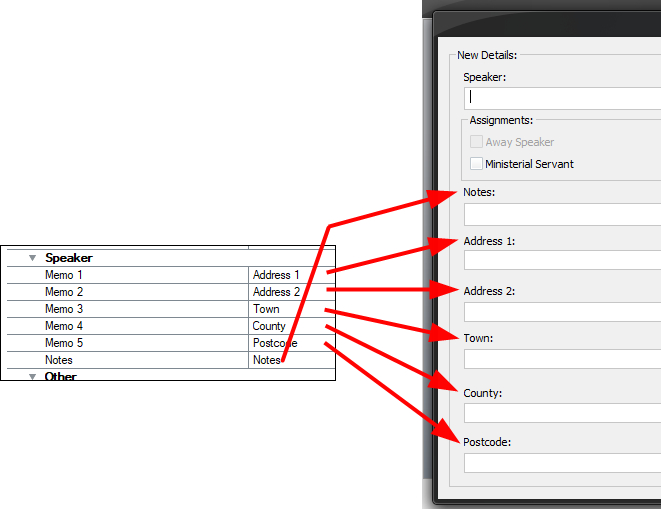Other Settings
|
|

You can fine-tune several aspects of the application behaviour from this window. You are presented with a property grid of settings:
- The left column has the name of the setting.
- The right column is where you specify the value for the setting.
- At the very bottom is a description pane. This will provide you with some information about what the setting is.
These settings are grouped into four categories:
 At the very bottom is a information panel. This will provide you with a description about what the setting is. Please make use of this information panel this this help topic only provides and overview of these settings.
At the very bottom is a information panel. This will provide you with a description about what the setting is. Please make use of this information panel this this help topic only provides and overview of these settings.
To learn more about the features of this window, glance down the table below or highlight one of the aforementioned categories.
Text Colours
There are several locations in the application where text is displayed in a different colour. You can adjust these colours from here.
|
Type of Text |
Purpose |
|
Normal |
Use this to select the colour that you would like normal script syntax (not comments or errors) to be displayed in. This affects how the custom report editor lists the custom report scripts in the raw script pane. |
|
Error |
Use this to select the colour that you would like script errors to be displayed in. Whenever the script editor doesn't understand a line of text, it changes it into a comment, so that the script will continue to load. But this setting allows you to clearly identify these comments which are actually errors. There should be no errors in a script. This affects how the custom report editor lists the custom report scripts in the raw script pane. |
|
Comment |
Use this to select the colour that you would like script comments to be displayed in. This affects how the custom report editor lists the custom report scripts in the raw script pane. |
|
Keyword |
Use this to select the colour that you would like script keywords (e.g.: LOOP, PARAGRAPH, TEXT, EOL etc.) to display in. This affects how the custom report editor lists the custom report scripts in the raw script pane. |
|
Function |
Use this to select the colour that you would like expression functions (e.g.: len(), trim() etc.) to display in. This affects how the custom report editor lists the custom report scripts in the raw script pane. |
|
Variable |
Use this to select the colour that you would like variables (e.g.: $LocalCong etc.) to display in. This affects how the custom report editor lists the custom report scripts in the raw script pane. |
|
Assigned |
Use this to select the colour that you would like speakers assigned talk numbers to be highlighted when when assigning home and away talks. This aids you in not selecting a talk that a brother doesn't give. |
|
Favourite |
Similar to above, but it indicates the speakers favourite talk numbers instead. So if you use two different colours, you can easily see which talks a speaker prefers to give. |
|
Ministerial Servant |
Use this to select the colour that you would like speakers who are appointed as Ministerial Servant's to show as in the speaker drop lists when assigning home and away talks. |
|
If you want text to appear transparent on a non-white banner, then you must set the highlight to the same as the banner colour. Also, SEPARATORS show over the top of the banner colour. |
Note that you can use a custom colour as well so you are not tied down to the colours available from the palette. Click on Other to use a custom colour to display a colour window:

Use the options and features available to choose your desired colour.
Duplicate detection
|
If any possible conflicts are found, they are displayed to you. You have the ability to select this information and copy it into another application for reference, or you can click Yes to accept the details as being correct. Here you can see an example of what the pop-up window looks like. |
 This can be a useful feature, if setup correctly, because it can help you to avoid duplicating an assignment of speaker or talk number within the specified time frame.
This can be a useful feature, if setup correctly, because it can help you to avoid duplicating an assignment of speaker or talk number within the specified time frame.
Labels
|
This way you can customize the program to your requirements and have meaningful descriptions. The labels fall into three categories:
And for each of these categories you can customize 5 Memo labels and Notes label. There is also two labels for the custom brother assignment. |
Startup
It is possible to get Public Talks to automatically check the next arranged public talk assignments when it starts up. You can read the Check Talk Exchange help topic to learn more about these settings.




